 Kyra Cornelius Kramer is an author and researcher with undergraduate degrees in both biology and anthropology from the University of Kentucky, as well as a masters degree in medical anthropology from Southern Methodist University. Her work is published in several peer-reviewed journals, including The Historical Journal, Studies in Gothic Fiction, and Journal of Popular Romance Studies. She is also a regular contributor to Tudor Life Magazine, the magazine of the Tudor Society. Her books include Blood Will Tell: A medical explanation for the tyranny of Henry VIII, The Health of Henry VIII in a Nutshell, Edward VI in a Nutshell, and The Jezebel Effect: Why the slut shaming of famous queens still matters. Her newest book, Mansfield Parsonage, will be out on 28 January 2017. You can follow her at @KyraKramer. The state funeral of Admiral Horatio Nelson was held on 9 January, 1806 and there were Emperors who were mourned with less gravitas and pomp by the Romans than the Hero of Trafalgar was lamented by the English. The funeral was lavish to say the least. Nelson’s body, inside of a lead coffin that was in turn placed into: "another wooden one, made from the mast of L’Orient which had been salvaged after the Battle of the Nile … lay in state in the Painted Hall at Greenwich for three days, before being taken upriver aboard a barge, accompanied by Lord Hood, chief mourner Sir Peter Parker, and the Prince of Wales … The coffin was taken into the Admiralty for the night, attended by Nelson’s chaplain, Alexander Scott. The next day, 9 January, a funeral procession consisting of 32 admirals, over a hundred captains, and an escort of 10,000 soldiers took the coffin from the Admiralty to St Paul’s Cathedral. After a four-hour service he was interred within a sarcophagus originally carved for Cardinal Wolsey. The sailors charged with folding the flag draping Nelson’s coffin and placing it in the grave instead tore it into fragments, with each taking a piece as a memento." It is odd to think of Wolsey’s sarcophagus used to inhume the body of an Admiral almost 300 years after the Cardnial’s death, but history is full of such odments. After the funeral, Nelson was quickly elevate to the status of demigod. The Anglican church tended to avoid saints as “Popish” but Nelson was revered to the point that I would not be surprised to hear sailors beseeched him to intercede with the divine on their behalf. While Nelson was certainly laudatory, I have always been more interested in his mistress, Lady Emma Hamilton, who was allowed to fall even as Nelson was being upheld for the masses. Lady Hamilton was born Amy Lyon. She was the daughter of a poor working class couple and became even poorer when her father died in her infancy. She worked as a maid at age 12 and then as an dancer until, as many impoverish but beautiful girls were, she became a prostituted child. Sure, Sir Harry Fetherstonhaugh, the man who took her to be his mistress when she was only 15 wouldn’t have thought of her that way … but she was nevertheless just a young girl when he reportedly had her dancing naked to entertain his friends. He also made her an unwed teenaged mother shortly thereafter. Fetherstonhaugh wasn’t completely despicable. He didn’t cast out the pregnant teen to starve in the streets. Instead, he supported her until the baby, named Emma, was born and placed under the care of a respectable couple, a Mr. and Mrs Blackburn. Amy was then taken as a mistress by Charles Francis Greville, the second son of the then Earl of Warwick and a member of Parliament for Warwick. Grenville was smitten by her, but changed her name to the more classy-sounding Emma Hart. He also sent her to have her portrait done by the painter George Romney. It was then that Emma became the subject of many of Romney’s most famous portraits. In fact, so began Romney’s lifelong obsession with her, sketching her nude and clothed in many poses he used to create paintings in her absence. Through the popularity of Romney’s work and particularly of his striking-looking young model, Emma became well known in society circles, under the name of “Emma Hart”. She was witty, intelligent, a quick learner, elegant and, as paintings of her attest, extremely beautiful. 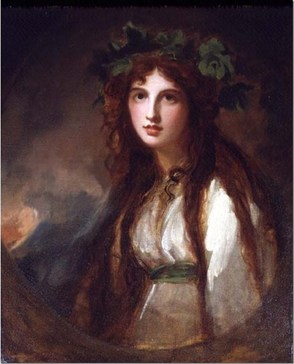 Although Grenville seemed fond of Emma, he needed to marry an heiress and thus in 1783 he started looking for a way to get rid of her so he could scrounge up a bride. He came up with the clever idea of sending her to his uncle, Sir William Hamilton, British Envoy to Naples, to use her as a bed-warmer until Grenville was safely married and could bring Emma back to serve as his sex toy once more. Emma’s famous beauty was by then well-known to Sir William, so much so that he even agreed to pay the expenses for her journey to ensure her speedy arrival. A great collector of antiquities and beautiful objects, he took interest in her as another acquisition. He had long been happily married until the death of his wife in 1782, and he liked female companionship. His home in Naples was well known all over the world for hospitality and refinement. He needed a hostess for his salon, and from what he knew about Emma, he thought she would be the perfect choice. Greville did not inform Emma of his plan, however, but instead suggested the trip as a prolonged holiday in Naples while he (Greville) was away in Scotland on business. Emma was thus sent to Naples, supposedly for six to eight months, little realising that she was going as the mistress of her host. She became furious when she realised what Greville had planned for her. Emma initially refused to become Hamilton’s mistress but after several months formed a liaison with her elderly host. They married on 6 September 1791 when she was twenty-six and Sir William was sixty. Once merely low-born Amy Lyon working under the stage name Emma Hart, she was now Lady Hamilton with a husband in the Privy Council. As part of her duties as a wife of the British Envoy, Emma welcomed Nelson to Naples in 1793. Nelson was already a naval hero, but had lost an arm, an eye, several teeth, and was in ill health. Sir William took Nelson into his home and Emma nursed him. It didn’t take long for Emma and Nelson to fall in love, and Sir William not only condoned the affair … he seems to have encouraged it. Perhaps it was his age or his memories of his own beloved wife, but Sir William only wanted to see his young wife happy with her lover. The three of them lived together in Naples and when they returned to England in 1800, they lived together still, causing a massive scandal. 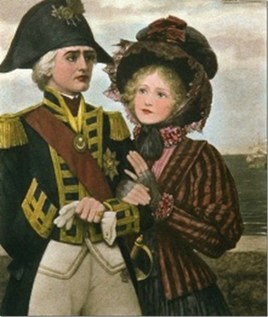 When Nelson was sent back to sea, Sir William continued to watch over and care for his wife, now pregnant with Nelson’s baby. Emma gave birth a daughter Horatia, on 29 January 1801. A few months later, Nelson bought Merton Place, where he, Emma, Horatia, Sir William, and Emma’s mother all lived as one big, happily family. This drove the public batty with befuddlement. How could they possibly be happy in such an immoral muddle as that? Nevertheless, they all lived very well with one another until Sir Williams death in 1803. Nelson was at sea again, and Emma was pregnant with their second child. All they needed was for Nelson to obtain a divorce and they could finally wed. However, tragedy would come before any wedding between them. First, their newest baby daughter died a few weeks after her birth in 1804, then Nelson himself died in battle on 21 October 1805. Thomas Hardy, captain of the HMS Victory, recorded that Nelson made a final request was that he “take care of poor Lady Hamilton”. She had clearly been the love of Nelson’s life. 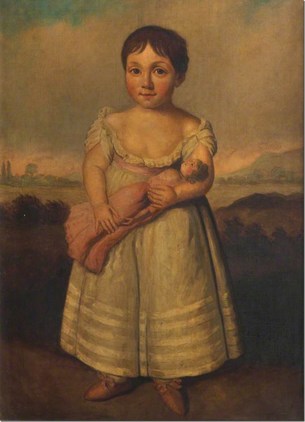 Lady Hamilton was devastated by the news of Nelson’s death: "They brought me word, Mr Whitby from the Admiralty. ‘Show him in directly,’ I said. He came in, and with a pale countenance and faint voice, said, ‘We have gained a great Victory.’ – ‘Never mind your Victory,’ I said. ‘My letters – give me my letters’ – Captain Whitby was unable to speak – tears in his eyes and a deathly paleness over his face made me comprehend him. I believe I gave a scream and fell back, and for ten hours I could neither speak nor shed a tear." While Nelson’s brother, William Nelson, was created Earl Nelson and Viscount Merton of Trafalgar and Merton in the County of Surrey in recognition of his brother’s services, as well as inherited the Dukedom of Bronté in Sicily, Lady Hamilton and Nelson’s daughter Horatia were mostly left to fend for themselves. Nelson’s last will and testament left his estate to his brother but begged that the government take care of his lover and their daughter as a tribute to his services to the country, but his posthumous pleas were ignored. Emma and Horatia spent a year in a debtors’ prison in 1812, albeit housed by the jailer in relative comfort, before some of Nelson’s friends helped her move to Calais to escape her debtors. There, she lived in penury until she died in January of 1815, at age 49. After Emma’s death, Horatia disguised herself as a boy to evade her mother’s creditors and returned to England to live with one of Nelson’s sisters, Mrs Catherine Matcham in Sussex. Although she would discover in 1845 that she was Nelson’s natural daughter, as well as his adopted Goddaughter, and embrace this honor, for the rest of her life Horatia would insist that Emma Hamilton had not been her biological mother, but had instead been ONLY her adopted mother and guardian. Apparently it was okay to be Nelson’s bastard, but not one born to such a notorious mistress who had posed nude for artists? 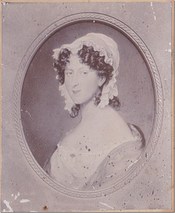 Horatia married the Rev. Philip Ward on 19 February 1822, and had 10 children (half of whom sadly predeceased her) before dying on 6 March 1881. On her tombstone she is recorded as “the beloved daughter of Vice Admiral Lord Nelson” with no mention of a mother at all. She must have sprung from Nelson fully formed, like Athena from Zeus? Amy Lyon “Emma Hart” Hamilton has no gravestone at all.
3 Comments
Kate
1/15/2017 01:09:18 pm
It's my formatting - I'll sort it.
Reply
1/16/2017 06:14:27 am
No worries! And no criticism of the format! I just didn't want people to think I had cut and pasted and then claimed it as my work; I'm paranoid about that sort of thing :) Leave a Reply. |
Sex History ContentsIf you would like to submit an article, please fill out a submission on the Contact page Archives
September 2020
|
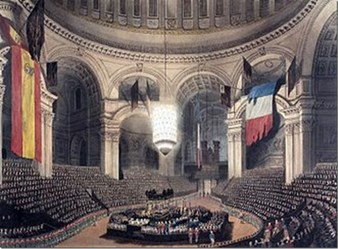
 RSS Feed
RSS Feed